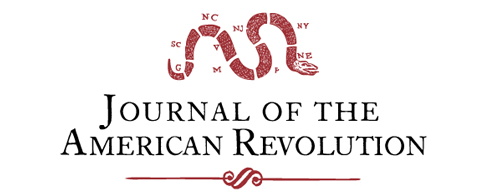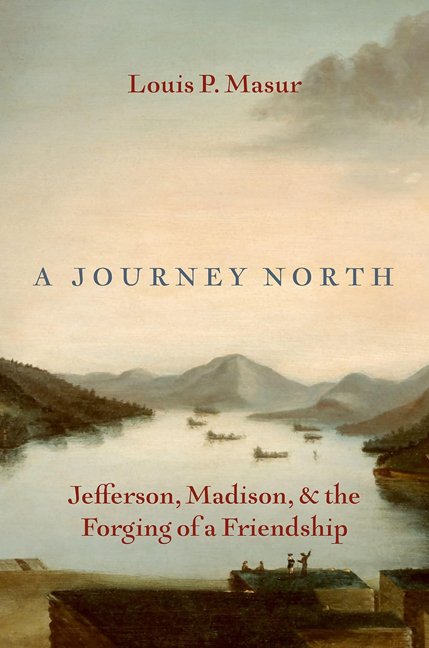A British cannonball decapitated James McNair, a Continental artillerist, at the Battle of Monmouth on June 28, 1778. Thomas Bliss, another American cannoneer, was captured that day. Col. John Durkee, commanding Varnum’s brigade, escaped death that Sunday but his right hand was permanently disabled from a wound received in the morning. Col. Henry Livingston, commanding a battalion of picked forces, took a bullet in the thigh during the afternoon action. Col. Walter Stewart was wounded by a musket ball in the Point of Woods; fellow battalion commander in this sector, Lt. Col. Nathaniel Ramsey, was only slightly wounded but captured. Sgt. Stephen White collapsed from fatigue on a near hundred-degree day and died that night.[1] Nearly all of these men were part of Maj. Gen. Charles Lee’s advanced corps on the battlefield.
What else do all of these American battle casualties have in common? The answer is remarkable and nonsensical at the same time. Based on the convention by contemporaries and the tradition of subsequent historians, numerical strength in campaigns and battles was determined solely by the numbers of “rank and file”––infantry privates and corporals––on the contested field. Thus, every commander in the eighteenth century and most campaign authors from the nineteenth century to the present who reported casualties of the Battle of Monmouth included these seven soldiers in their totals tallied for American losses but disregarded including these same soldiers in the totals for troops who participated in the battle.
How can a soldier be tallied as a casualty if he was not a participant? He cannot, of course. He must be included as present on that battlefield. However, these seven examples of artillerists, infantry officers, and noncommissioned personnel (“noncoms”) were a subset of dozens of American casualties at Monmouth that were tallied in columns other than “rank and file, present and fit for duty” in official weekly and monthly returns, or occasional field returns composed by the army. Throughout the June 18-30 Monmouth campaign, numerical strength was represented by George Washington, his subordinates, and subsequent centuries of historians as rank-and-file infantry present and fit for duty. These numbers, while capturing most of the army that shouldered a firelock, woefully underestimates—by several thousand—the true numbers of participants in the campaign and in its namesake battle.
This under-representation of American participants in an active campaign impairs the understanding of the campaign on several levels. The amount of road and field space occupied by portions of an army is determined by the total number of soldiers present, either on the road or in the field. This includes commissioned officers, non-commissioned personnel working in field and staff commands for infantry, artillery, and dragoons (Continental and militia), in addition to rank-and-file-infantry. A rule-of-thumb approach suggests that a brigade of 1,500 men marching as a unified body and accompanied by a section of artillery on a road will occupy at least a mile of that roadbed, vanguard to rear. Expert training compacts the column but in the Monmouth campaign much of that compaction was offset by thousands of new levies who received little or no training in maneuvers that economized space. Intervals between each row of soldiers in the road, between battalions and regiments, and between each brigade naturally widens from the start of the march to the end. Alignment of troops in a field also is impacted by training but also, of course, by the total number of soldiers present. Expressing strength solely in terms of infantry privates and corporals misleads one to believe the marching or deployed columns of troops to be much smaller than in reality.
For an army of seventeen infantry brigades, attached artillery and cavalry, and accompanied by militia, more than eight thousand Continental and militia soldiers on any given day during the last two weeks of June were active in New Jersey throughout the Monmouth Campaign in a category other than “rank and file infantry, present for duty.” Each brigade of rank and file expands by 150 to 250 more personnel when appointed officers and “noncoms” are included. Based on a calculation by the adjutant general in May, the numbers available for campaigns and battles rose significantly higher when including 57 percent of privates temporarily detached from their brigades and therefore tallied as “on command,” who were still close enough to their respective battalions and regiments to march and fight with them at a moment’s notice. The adjutant general also calculated that two out of every three soldiers listed as sick but still present with the army were usually well enough to shoulder a flintlock and march to a battlefield.[2]
Four army troop-strength returns compiled between June 13 and July 4 confirm the numbers that Washington carried into New Jersey to battle the British army.
A. The Numerical Strength of Washington’s Army that entered New Jersey
The final weekly return at Valley Forge was prepared on June 13, less than a week before departing for the Monmouth campaign.[3] This return compiled present and absent numbers for sixteen of the seventeen Continental infantry brigades (Maxwell’s four New Jersey regiments were in New Jersey at this time) plus independent regiments and one company.
From June 13 Return
| Infantry Field Officers | 943 |
| Infantry Staff Officers | 258 |
| Infantry non-commissioned personnel | 2,054 |
| Infantry “on command” (rank and file) | 2,649 |
| Infantry present with regiments (rank and file) | 10,826 |
| Total infantry present, fit for duty | 16,730 |
Infantry Infantry Adjustments (estimated –– not tabulated in June 13 return):
| Army, division, brigade commanders and staffs | 150 |
| Life Guard[4] | 50 |
| Field officers and non-commissioned “on command” | 150 |
| New levies and returned from furlough between 6/13-6/18) | 500 |
| -1,000 |
| Total of Tabulated and estimated infantry | 16,580 |
| Artillery officers and men present for duty | 1,123 |
| Total Continentals departing Valley Forge for New Jersey | 17,703 officers and men |
Note that the rounded figure of 1,000 healthy soldiers left behind is likely an overestimation as there is no corroborating evidence of the number of fit soldiers that would be detached to cover Philadelphia and outlying regions after the threat of enemy presence had completely disappeared. It is also assumed that new “sick present” soldiers between June 13-18 were equally offset by those soldiers tallied in that column on June 13 who were deemed well enough five days later to embark upon the Monmouth Campaign.
The New Jersey brigade had departed Valley Forge in May to assist New Jersey militia in monitoring Crown force activities out of Philadelphia. Between May 1 and June 15, 573 nine-month levies swelled the ranks of these four regiments, numbers that were not apparently included in the July 4 army return. A dedicated study of the New Jersey regiments during the Revolution tallies their strength, including these new recruits, at 1,690 non-commissioned personnel and rank and file for June.[5] Including the 78 field and staff officers from the July 4 return, as well as Gen. William Maxwell and his staff, makes this brigade the largest participating in the Monmouth campaign at 1,770 officers and men. Because Maxwell’s brigade was always detached from the Grand Army in New Jersey, it was the only Continental brigade exempt from having its best soldiers picked from it by Morgan, Scott, and Wayne.
On June 23, Gen. Philemon Dickinson reported that his force of New Jersey militia “may not amount to 12, or 1300 Privates.”[6] Splitting the difference of his estimate to 1,250 privates, and recognizing that Continental forces of similar size typically had around 335 officers and “noncoms,” a reduced estimate of 250 militia officers and noncoms seems appropriate. This places Dickinson’s total force at 1,500 officers and men.
The exact composition of Col. Stephen Moylan’s Continental dragoons has not yet been determined; therefore, the lowest estimate of 200 horse soldiers (officers and men) operating from Trenton into this campaign, is used here. Washington added additional Pennsylvania militia under militia generals John Cadwalader and John Lacy, a force he estimated at 90-to-100 rank and file totaled for both commands, equating to no more than 120 officers and men.[7] Putting all of this together:
| Valley Forge Army crossing to New Jersey, June 20-22 | 17,703 |
| Maxwell’s Brigade in New Jersey | 1,770 |
| Moylan’s dragoons arriving from Trenton | 200 |
| New Jersey militia commanded by General Dickinson | 1,500 |
| Pennsylvania militia under Generals Cadwalader and Lacey | 120 |
| Total Continental and militia officers and men present in New Jersey on June 23, 1778, to operate against the retreating British army | 21,293 |
B. June 22 Field return
As the army completed its entry into New Jersey, Washington’s staff prepared a “Field Return of the Troops under the Command of His Excellency General Washington at Coryell’s Ferry, June 22nd 78.”[8] Field returns are stripped-down versions of typical weekly and monthly reports that truncate the panoramic return containing twenty-nine columns into eight columns: field officers (three columns), company officers (two columns), non-commissioned personnel (two columns) and rank & file––all “present fit for action.” No artillery, staff officers, sick/present infantry, and on-command infantry are included in this return.
Regardless, when comparing the exact same categories for the same sixteen infantry brigades that were tallied on June 13 and June 22, a gain of 492 soldiers is noted over those nine days, 90 percent attributed to an increase in infantry privates. This can be explained by three factors: the surplus of levies entering camp in the last five days at Valley Forge, recovered sick troops, and on-command soldiers rejoining their regiments between June 13 and June 22. The small gain of commissioned personnel can be attributed to officers returned from furlough. Since these gains were factored into the calculation for the troop strength at departure from Valley Forge, the June 22 field return merely confirms the adjustments made to the June 13 weekly report to determine the number of soldiers that departed Valley Forge
C. July 4 return: Further confirmation of June 13 return
The troop strength report compiled nearly a week after the battle of Monmouth was inclusive of Continental infantry and artillery only.[9] It tallied 18,927 Continental officers and men present in the theater of operation, most of them on the banks of the Raritan or monitoring the British departure from Sandy Hook. An “apples to apples” comparison of the Continental infantry and artillery that entered or were already in New Jersey two weeks earlier (19,463) shows a discrepancy nearing 500 additional losses by July, feasibly explained by battle casualties and other campaign losses during the march through the state.
D. Field Returns of June 22 and June 28: Origin and numbers of Soldiers in Picked Forces
Discrepancies permeate primary and secondary literature regarding the composition of the picked forces unique to the Monmouth campaign. All depict numbers as “rank and file” only, and with a consistent hint of low estimates provided by pro-Charles Lee witnesses during that general’s court martial. The number of troops provided by each of the sixteen brigades (Maxwell’s brigade was detached and therefore excluded) has never been determined. Three distinct forces of elite Continental soldiers were produced within four days by selecting top-quality men from sixteen brigades of the Grand Army, the first by Col. Daniel Morgan at Coryell’s Ferry on June 22; the second by Brig. Gen, Charles Scott at Hopewell on June 24; and the third by Brig. Gen. Anthony Wayne at Kingston on June 25.
Only Daniel Morgan’s picked force can be defined by equal numbers of men from each contributing brigade. General orders on June 22 specified, “Each Brigade [except for Maxwell’s] is to furnish an active, spirited Officer and twenty-five of it’s best marksmen immediately” to Colonel Morgan’s specialized force of Virginia and Pennsylvania riflemen.[10] Subsequent orders modified the North Carolina brigade to provide its two light infantry companies instead of the twenty-six soldiers supplied by the other fifteen brigades, although the total number of troops in those two companies likely did not exceed thirty-five.[11] Additionally, eighty-two members of the elite trained Life Guard were annexed to Morgan’s force.[12] A total of 507 picked Continentals, nearly equally provided by all brigades (plus the Life Guard) more than doubled Morgan’s pre-existing, specialized force of Virginia and Pennsylvania riflemen. Assuming a minimalist estimate of 400 officers and men in the original force, Morgan’s command slightly exceeded 900 Continentals on June 23.
Washington ordered two field returns to be compiled during the campaign, the first on June 22 (described in section B) and the second just six days later.[13] Assuming the first return was compiled before Morgan’s men were selected for his picked force, then these returns together provide insight into the number of men picked from each brigade by General Scott on June 24 and by General Wayne on June 25. Although the field returns do not distinguish how many men from each brigade went to Scott and how many went to Wayne, together the figures reveal how much further these brigades were stripped of their best soldiers––after Morgan weakened each of them by taking twenty-five of their best marksmen.
Fourteen brigades appear in both returns. In six days, a significant reduction in the rank and file occurred in each brigade. The following numbers for each brigade (identified exactly as each appears in the return) give a strong hint that the chief reason for the loss of so many infantry privates and corporals in just six days prior to the battle was that, by orders, three commanders plucked them from their respective brigades to form their own elite forces.
| Brigade Identity as depicted in Field Return | June 22 Infantry present (Rank & File) | June 28 Infantry present (Rank & File) | Difference (loss) between dates |
| Glover | 781 | 512 | 269 |
| Paterson | 570 | 357 | 213 |
| Learned | 561 | 294 | 267 |
| 1st Maryland | 1,000 | 657 | 343 |
| 2nd Maryland | 542 | 528 | 14 |
| Muhlenberg | 752 | 575 | 177 |
| Woodford | 562 | 385 | 177 |
| North Carolina | 728 | 369 | 359 |
| Poor | 871 | 639 | 232 |
| Huntington | 755 | 509 | 246 |
| Weedon | 664 | 449 | 215 |
| 1st Pennsylvania | 514 | 352 | 162 |
| 2nd Pennsylvania | 664 | 401 | 263 |
| 3rd Pennsylvania | 541 | 343 | 198 |
| Scott | 518 | Not Present | —— |
| Varnum | 674 | Not Present | —— |
Total of rank and file missing between June 22 and June 28: 3,135 men in fourteen brigades
Two key brigades were part of the June 22 return, but not the June 28 return––the Virginia brigade formerly led by General Scott before he was assigned command of a picked force, and the Rhode Island and Connecticut regiments brigaded under General Varnum at Valley Forge. These two brigades each consisted of 1,000 officers and men present in some capacity at Valley Forge on June 13, but together, at least 350 privates between June 22 and June 25, and perhaps as many as 400 were reassigned to picked forces. This estimate is based on the fact that these two brigades shrunk during the Valley Forge encampment, like the other three Virginia brigades that averaged considerably fewer picked men than the ten brigades that grew numerically during their six months at Valley Forge. Their average is based on the average loss from the depleted brigades rather than from the flush ones.
Adding the estimates for the two missing brigades to the known total of the other fourteen results in a total tally of 3,500 rank and file soldiers present on June 22 but absent on June 28. Morgan, Wayne, and Scott picked no more than 2,900 of these (eighty-five percent of the return difference) based on confirming accounts; this assumes the additional 600 were campaign casualties from heavy marching or men placed on detached service away from their regiments––duty that did not involve being in a picked force. With a high representation that six of every seven men present on June 22 but missing from their brigades on June 28 were soldiers picked to serve Morgan, Scott, or Wayne, these two field returns provide a strong indication of from which brigades the picked forces originated, and roughly how many came from those brigades. Only the “1st MD” brigade yields visibly unreliable numbers to validate this; regardless, it can be assumed that the depleted state of this brigade upon entering New Jersey reduced the number of men picked from it, compared to all others.
What about picked officers and noncoms? A comparison of the two field returns of these fourteen brigades strongly suggests that commissioned and non-commissioned officers were also picked to form the specialized units. For example, there are 230 fewer sergeants on June 28 than on June 22 in those fourteen brigades, 115 fewer lieutenants and ensigns, twenty-five fewer captains, and eight fewer regimental officers. Correcting for the missing two brigades from these returns (Scott’s and Varnum’s) and then applying the same 85 percent used for rank and file that were picked versus missing for other reasons over the course of those six days produces a total of 375 officers and noncoms who ended up as picked forces. Knowing that no more than seventeen captains or lieutenants from those sixteen brigades (including the two light companies of North Carolinians) went to Morgan per General Orders of June 22 without any other officers or noncoms migrating to him leaves a total of 358 officers and noncoms dispersed among seven total battalions created for Scott’s and Wayne’s picked forces, 205 for Scott’s four battalions and 153 for Wayne’s three, assuming an equal dispersal to each battalion. Also noteworthy is that each cannon attached to the picked force added 16 artillery officers and men to that body of troops.
E. Numerical Strength of Advanced Corps under Charles Lee, June 27–28, 1778
Within four miles of Monmouth Courthouse:
| Colonel Daniel Morgan’s riflemen and picked force | 900 officers and men |
| New Jersey militia: Brigadier General Philemon Dickinson | 1,500 officers and men |
| Pennsylvania militia (John Cadwalader and John Lacey) | 120 officers and men |
| Continental dragoons: Colonel Stephen Moylan | 200 officers and men |
| Total | 2,720 officers and men |
At Englishtown:
| Brigadier General Charles Scott’s Picked force (4 battalions) | 1,650 officers and men |
| Brigadier General Anthony Wayne’s Picked force (3 battalions) | 1,150 officers and men |
| Brigadier General William Maxwell’s Brigade* | 1,700 officers and men |
| Colonel John Durkee’s (formerly Varnum’s) brigade | 800 officers and men |
| Colonel William Grayson’s (formerly Scott’s) brigade | 700 officers and men |
| Colonel Henry Jackson’s regiment (from June 13 return) | 330 officers and men |
| Continental artillery (minimum 16 artillerists per gun x10 guns) | 160 officers and men |
| Total at Englishtown | 6,490 officers and men |
*Reduced estimate from peak strength of 1,770 officers and men due to casualties at Crosswicks on June 23 and other losses by a month of campaigning in New Jersey prior to the battle of Monmouth, as well as stragglers who failed to reach Englishtown by June 28.
Total advanced Corps: 9,250 Continental and militia infantry, artillery, and cavalry officers and men
Estimates of five thousand rank and file infantry at Englishtown, provided in testimony by Alexander Hamilton and Rober Harrison, is consistent with the total force at Englishtown of 6,500, including officers, noncoms, and artillery.[14] On the day of the battle, Gen. Charles Lee’s adjutant, Col. John Brooks, noted upwards of 500 troops left behind who did not take part in the battle.[15] This would reduce the Englishtown participating force to six thousand infantry and artillery officers and men who marched onto the Monmouth battlefield. It is reasonable to assume that those five hundred left behind came from the thousand newest recruits at Englishtown marching in the Rhode Island/Connecticut brigade, the Virginia brigade, and perhaps the New Jersey brigade, rather than the elite forces commanded by Scott and Wayne.
Adjutant Brooks also claimed that Maxwell reported a rank-and-file force of 900, which appears closer to Maxwell’s tally of veteran privates and corporals, as he was inundated with more than 570 levies that entered his brigade over the previous seven weeks.[16] Based on Washington’s stated concern in the June 27 Englishtown council regarding the proficiency of Maxwell’s brigade being hampered by these new soldiers, it is apparent that those levies were with Maxwell at Englishtown on the eve of battle.[17] Maxwell’s testimony and the existing sources from this brigade give no indication that he cleaved off the new recruits from his force when he marched away from Englishtown on the morning of the battle.
Most likely, the 500 left behind consisted primarily of the newest recruits serving under Col. William Grayson. The two brigades he led totaled 1,300 privates. Leaving the newest recruits behind, whether purposefully or by attrition, reduced the total in Grayson’s command available to comply with Washington’s orders for Lee to send upwards of 800 rank and file (1,000 total in Grayson’s command including officers, noncoms, and artillerists manning four guns) out of Englishtown to initiate the Battle of Monmouth.
F. Numerical Strength of Grand Army under George Washington, June 28
While it is convenient to subtract the 9,250 Continentals and militia in the Advanced Corps from the 21,293 American soldiers in New Jersey on June 23 near the start of the campaign, the resulting value of 12,000 remaining Grand Army soldiers overestimates what was available to Washington on June 28. Conversely, the stripped-down field return of June 28 underestimates the troops encamped with Washington west of Manalapan Brook that Sunday morning. That June 28 return, likely begun on June 27 and completed in the early morning hours of June 28––the army was on the march at 7:00 A.M.[18]––tallied only 7,824 infantry officers and men present and fit for duty. A complete army return of July 4 which followed this field return shows upwards of a thousand artillerists were not counted, as well as at least six hundred noncoms (fifers and drummers), and nearly seven hundred rank and file soldiers present in camp but tallied as sick six days later.[19]
Correcting for these missing categories and adding in staff officers who traditionally are never included in field returns yields no more than 10,500 officers and men present west of Manalapan Brook on June 28. This leaves 1,500 soldiers from those fourteen brigades of the Grand Army completely unaccounted for since June 23––a number that dovetails well with the report of a similar number of troops from the same fourteen brigades tallied in the category of “on command” six days later in the monthly return compiled for the entire army, after all the picked forces except for Morgan’s had returned to their original commands. Thus, Washington’s Grand Army of fourteen infantry brigades and artillery––all Continentals––consisted of no more than 10,000 troops northwest of the advanced corps who marched the four miles from the Jacob Miller farm to Englishtown on June 28, 1778.
Although the Grand Army stationed with Washington on June 27, 1778, was still numerically impressive, the quality of its ten thousand was suspect. This was a picked-over force, thrice rejected to serve with Morgan, then with Scott, and then with Wayne. Of the 5,000 recruits and levies that entered New Jersey to participate in this campaign, no less than 3,500 remained with the Grand Army on the Jacob Miller farm, west of Manalapan Brook on the eve of battle, with over half of them entering the service after May 1. One out of every three soldiers in the Grand Army on June 28 was a 1778 soldier, serving with veterans deemed insufficient on three occasions to be members of a picked force.
It is clear Washington had intentionally created two armies for this campaign, an “Advanced Corps” of about nine thousand soldiers and a Grand Army “reserve” of approximately ten thousand Continentals. Although the numerical size of these two forces was nearly the same, the striking differences in the overall quality of the soldiers between them reveals that Washington had placed his best foot forward to battle his opponent.
As we strive to improve our understanding of encampments, campaigns and battles of the Revolutionary War, it is imperative that we come closer to reality regarding the numbers of soldiers present in those events. Doing so may widen our eyes to the number of rations needed to sustain an army, the expanse of tents during a bivouac, the number of huts that dotted a winter landscape, the amount of road space a column of troops occupied on the march, and the length of battle lines on a contested field. Most importantly it will rightfully credit true participation in these events, regardless of whether or not that participation placed the soldier hors de combat.
David McClaren, Jacob Loomes, and Gideon Noble deserve to be credited as such. All three men became casualties on the Monmouth battlefield on June 28––McClaren killed; Loomes incapacitated by the heat; Noble injured.[20] Common practice has caused them––and hundreds more “noncoms” with the exact same duties as them who escaped the day unscathed––to have been excluded from the tally of participation because they carried fifes instead of firelocks into the battle. This current practice also neglects to count commissioned officers, staff officers, all sergeants and drummers, dragoons, and artillery officers and men as present on the battlefield.
It is necessary to change that practice.
[1] William Stryker, The Battle of Monmouth (Princeton, NJ: Princeton University Press, 1927), 288-293.
[2] See cover of May 2 return, Revolutionary War Rolls, 1775-1783, RG 93, M246, National Archives Records Administration, Washington, D.C. (NARA).
[3] June 13, 1778 weekly return, NARA.
[4] This estimate does not include the additional scores of men added to the Life Guard in March to form the Model Company for training by Baron de Steuben. Those troops would be listed as “on command” from their respective brigades. To prevent a double count, they are not considered here.
[5] John U. Rees, “‘One of the best in the army.’ An Overview of the New Jersey Brigade, 1775–1783,” revwar75.com/library/rees/njbrigade.htm.
[6] Philemon Dickinson to George Washington, June 23, 1778, in Edward G. Lengel, et al., eds. The Papers of George Washington, Volume 15 (Charlottesville, VA: University Press of Virginia, 2006) (PGW), 510-11.
[7] Council of War, June 24, 1778, PGW 15:521.
[8] “Field Return of the Troops under the command of His Excellency, General Washington, at Coryell’s Ferry, June 22, 1778,” NARA.
[9] Charles H. Lesser, ed., The Sinews of Independence: Monthly strength Reports of the Continental Army (Chicago, IL: University of Chicago Press, 1976), 72-74.
[10] General Order/After Orders, June 22, 1778, PGW 15:493.
[11] After Orders, June 22, 1778, PGW 15:493.
[12] Elijah Fisher journal, June 23, 1778, in William B. Lapham, Elijah Fisher’s Journal While in the War for Independence, and Continued Two Years After He Came to Maine. 1775-1784 (Augusta, ME: Press of Badger and Manley, 1880), 9.
[13] “Field Return of the Troops under the command of His Excellency, General Washington, at Coryell’s Ferry, June 22, 1778, and “Field Return, 28 June, 1778,” both in NARA.
[14] Alexander Hamilton testimony, in “The Lee Papers, Volume 3 (1778-1782) Proceedings of a General Court-Martial,” Collections of the New York Historical Society for the Year 1873, Volume 6 (New York, NY: Printed for the Society, 1874) (CLCMP), 57; Robert Harrison testimony, CLCMP, 71.
[15] John Brooks testimony, CLCMP, 149.
[16] Ibid., 148.
[17] William Maxwell testimony, CLCMP, 89.
[18] Ebenezer Wild diary, June 28, 1778, in James M. Bugbee, ed., The Journal of Ebenezer Wild (1776-1781) (Cambridge, MA: John Wilson and Son, 1891), 35.
[19] Lesser, ed., The Sinews of Independence,72-74.
[20] Stryker, The Battle of Monmouth, 288, 295.








2 Comments
The article says nothing about British and Loyalist strength. Are their numbers more accurate? If so, does the manner in which Continental strength was counted make it appear that they were weaker than claimed? Already, we have situations such as the Battle of Cowpens in which Morgan’s strength has long been underestimated. If the manner of counting is also in error, what does that say of any claims that they were outnumbered by the British.
Allane,
It was solely my mistake for not titling the article, “American Strength in the Monmouth Campaign . . .” The main purpose of the article was to demonstrate the fallacy of using “rank and file” data as the determinant of number of participants on the march and in a battle, and to appreciate the numerical size and quality of soldiers in the advanced corps that Washington created to initially confront Clinton’s army in New Jersey. Washington outnumbered Clinton in total available soldiers in the entire campaign theater, but not by enough to give him an advantage — particularly since 3,000 Continentals had been under arms for less than 8 weeks and most of them with minimal or no training.